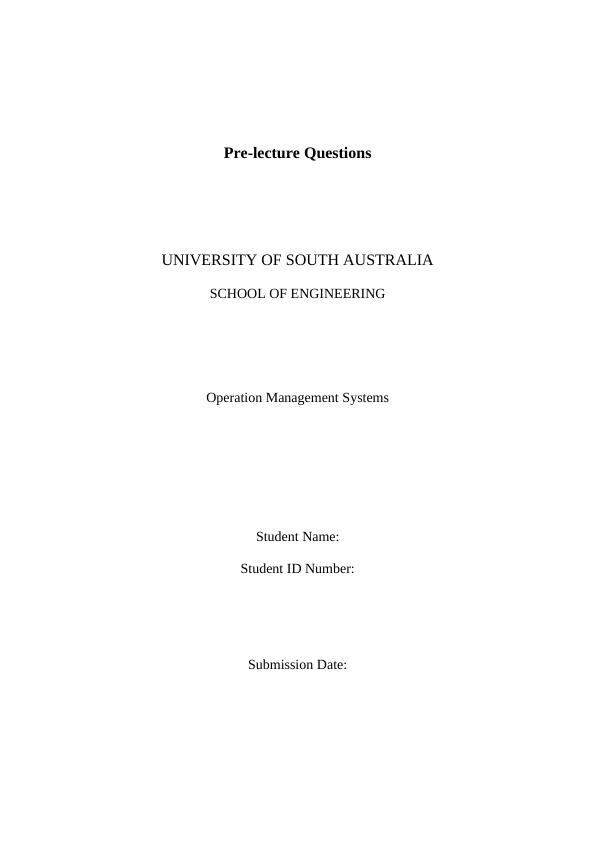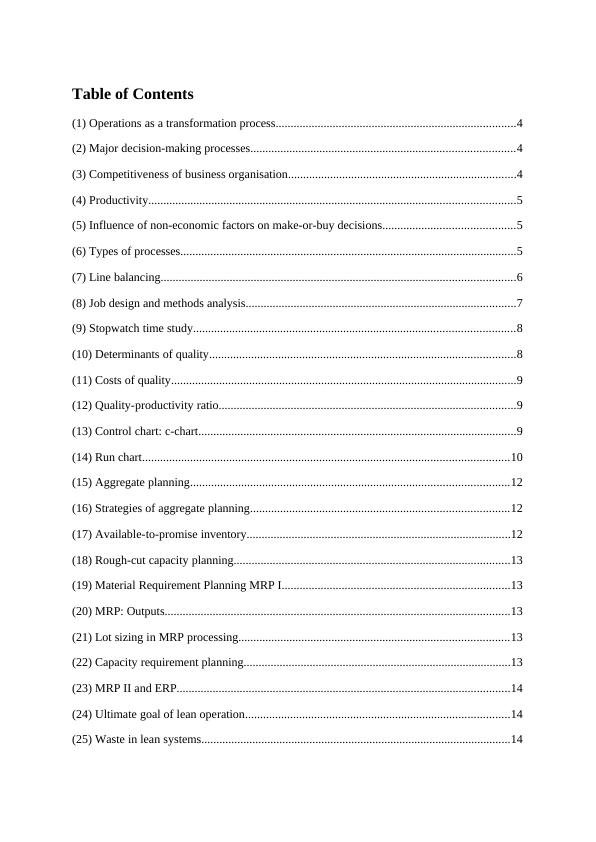Operations Management Systems: Pre-lecture Questions
19 Pages4994 Words233 Views
Added on 2022-11-18
About This Document
This document covers pre-lecture questions related to Operations Management Systems including operations as a transformation process, major decision-making processes, competitiveness of business organization, productivity, influence of non-economic factors on make-or-buy decisions, types of processes, line balancing, job design and methods analysis, stopwatch time study, determinants of quality, costs of quality, quality-productivity ratio, control chart: c-chart, aggregate planning, strategies of aggregate planning, available-to-promise inventory, rough-cut capacity planning, material requirement planning MRP I, MRP: Outputs, lot sizing in MRP processing, capacity requirement planning, MRP II and ERP, ultimate goal of lean operation, waste in lean systems, design and operation of lean system, SMED (Single-minute exchange of die) relation with lean operation, difference between push systems and pull systems, Kanban Calculation, and significance of Operation Management.
Operations Management Systems: Pre-lecture Questions
Added on 2022-11-18
ShareRelated Documents
End of preview
Want to access all the pages? Upload your documents or become a member.
Construction of a Solar Energy System: Project Management
|40
|6093
|199
Project Management Assignment PDF
|35
|5405
|67
Renewable Energy Conversion Systems: EAC4027-N
|33
|5567
|127
Supply Chain Management for Vector Valves Ltd
|30
|4152
|248
Project and Operational Management Assignment
|25
|8767
|65
Operational and project management: Assignment
|20
|3828
|172




